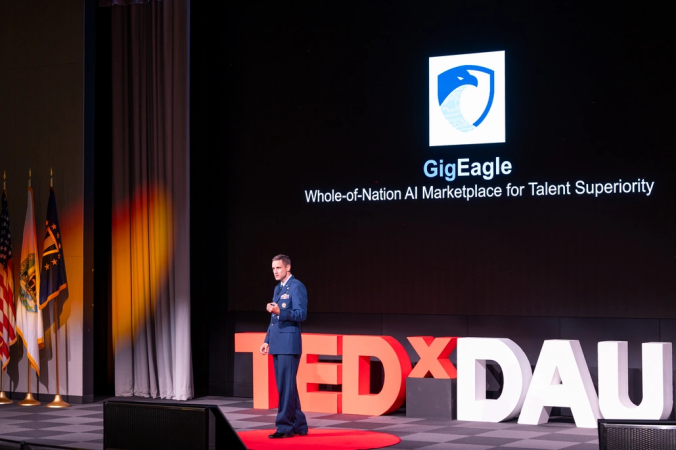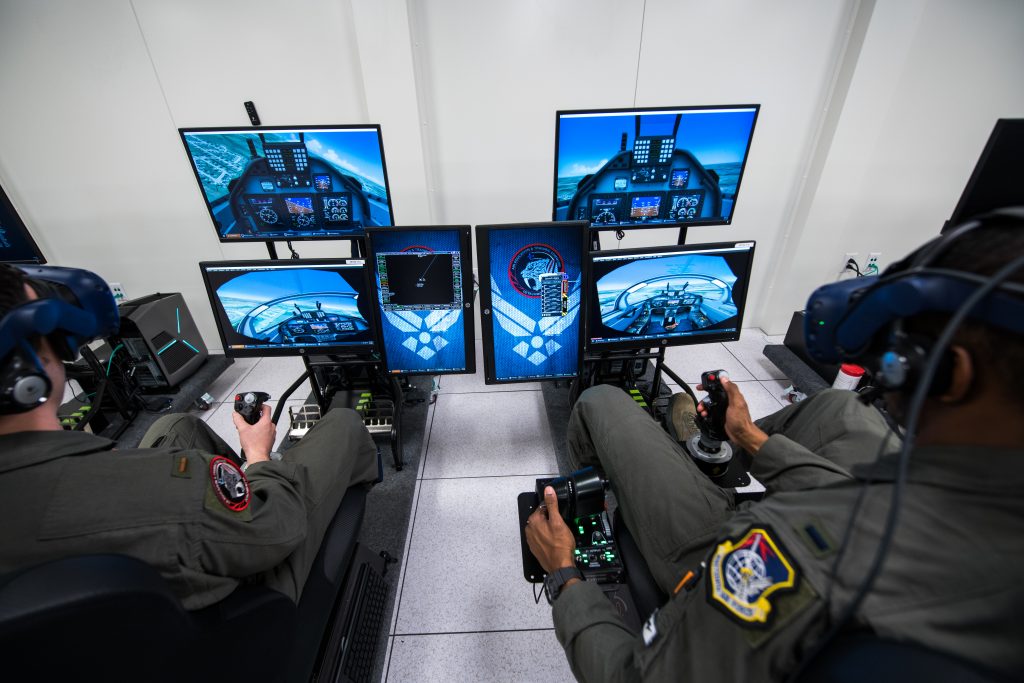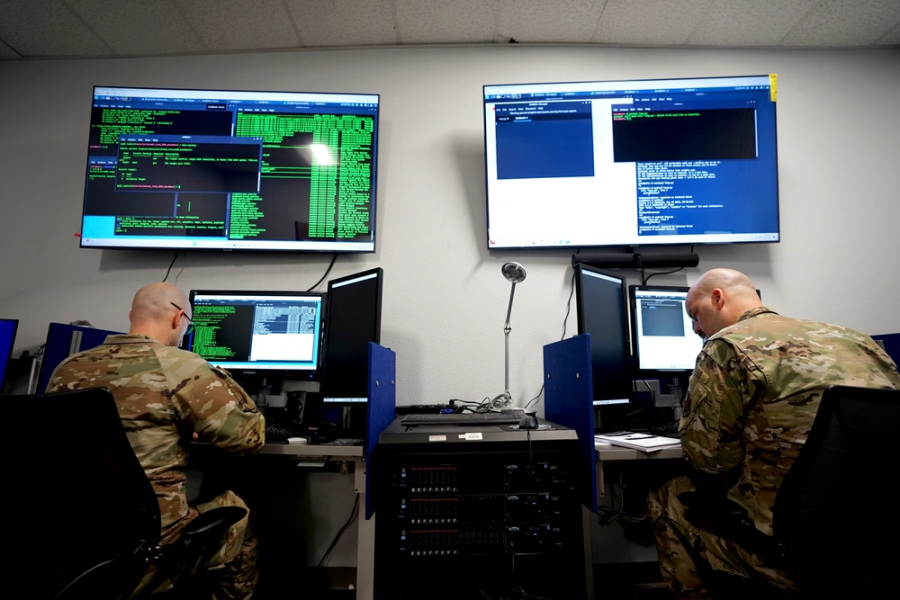Imagine the conflict with China that U.S. military officials have warned about for years is on the verge of breaking out. An Air Force intelligence specialist must scan satellite images for signs of a military build-up along the Taiwan Strait, but the artificial intelligence program needed to parse through all the images needs an improvement, fast.
A new mobile app developed by a team of joint service members may be the solution. GigEagle is like a military version of the civilian app Taskrabbit, where users can find individuals to help put together an IKEA cabinet, move a mattress, or other temporary handy jobs. But instead of finding help for one-time tasks around the house, GigEagle finds talent who can tweak an AI algorithm, operate a small drone, translate documents, or other short- or long-term projects (anywhere from 4 hours to a year) that help accomplish military missions.
The key factor is speed. Today it can take hours to write a proposal and months to hire the right talent. With GigEagle, users can search for the skills they’re looking for or enter the problem they need to solve, and the app’s AI matches them with ideal candidates in seconds.
“What our team is trying to do is really optimize the use of talent: how we identify and then employ talent at a speed we’ve never before been able to achieve,” Air Force Brig. Gen. Michael T. McGinley, director of GigEagle, told Air & Space Forces Magazine.
Another key feature of the app: it lets candidates list skills outside their main military job specialty, which is hard to track in existing military talent management systems.
“Whether you’re Active-Duty, Guard, or Reserve, your record is only going to show a small subset of what you’ve actually done,” McGinley said. “So why aren’t we capturing the full person?”
That could be particularly helpful for Reservists or National Guardsmen, who pick up program management, data science, user experience, or a wide range of other skills in their civilian jobs. GigEagle lets service members create profiles similar to LinkedIn where they can describe their skills, experience, and endorsements.
McGinley first started working on the GigEagle project in 2018, with initial tests starting in 2022. The app’s six-month prototype phase is due to end in October, followed by a production phase. More than 3,000 service members have signed up and are already solving real-world problems. For example, the Air Force Research Laboratory needed urgent help with a generative AI task, and within five minutes McGinley used GigEagle to find two Army Reservists with the data analysis and AI skills the lab needed.
“They were shocked, because otherwise how would you get that,” McGinley said. The Air Force’s newly-established provisional Integrated Capabilities Command is already listing gigs on the app, he added.

Today, members of the National Guard and Reserve from across the services can become gig workers or gig managers, meaning they could post requirements or gigs, while Active-Duty members or civilian military employees can be only gig managers. But under new pilot programs due to start soon, Active-Duty service members, military civilian employees, and military spouses in certain organizations and functional communities will have a chance to be gig workers too.
Thinking Big
In 2023, Army Gen. Mark A. Milley, then-chairman of the Joint Chiefs of Staff, said advances in sensors, robotics, and artificial intelligence will cause a “fundamental change in the character of war” by making the observe, orient, decide, and act (OODA) decision-making loop faster than ever.
That change requires a fundamental change in military talent, McGinley said, toward quickly finding and engaging people with the skills to solve a rapidly evolving series of problems.
GigEagle is one way of supporting what the general describes as an agile talent ecosystem, where, for example, “instead of just one Airman having to do many things, what we’re able to do now is support that Airman with a network of informed expertise,” the general said.
That network may one day include the entire military, the entire government, industry, academia, and even partner nations.
“Even in a non-conflict situation, if I would like to reach out to a radar expert at Caltech or MIT, I should be able to do that,” he said. “We’re exploring different ways and legal authorities to pull those individuals in.”
That includes military spouses, who often have trouble finding work amid the frequent moves of military life. The GigEagle team is working with the Office of the Secretary of Defense on a SOAR (spouse opportunity access and recognition) version of the app that could help find employment for spouses across both commercial and government job sectors. Team members say they expect the first of three efforts to explore that route will start sometime in fiscal 2025.
Besides matching organizations with talent, GigEagle could also help officials at the headquarters level track trends in talent supply and demand.
“Now I can see who’s calling for that talent, and what types of skills are they calling for?” the general said. For example, “I can show that the Army’s supplying some of this analyst support. Why is that?”
Making an Impact
There may also be other benefits to a capability like GigEagle. In an essay published in War On the Rocks this August, McGinley and his GigEagle partner, Army Maj. Jim Perkins warned that some service members may not always feel as if they are serving in a meaningful way or contributing their most important skills.
GigEagle may scratch that itch, first by identifying service members’ skills, and second by letting them use those skills to directly help their colleagues solve urgent challenges.
“If you as an Airman feel like you are making an operational impact on the mission, I’m going to bet our retention will improve,” McGinley said. “We’re all wearing the uniform because we believe in the mission. Give people a chance to better engage, more directly engage that mission, and I think magic happens.”
At a time where very few Americans know someone in uniform, the app may also help bridge the civilian-military divide by giving civilians with important skills a chance to serve that was not possible before.
“On a strategic level, that means when you make policy changes, you now have a more educated, engaged population,” the general said. “Those people in academia or industry who come in and provide support feel like they are a member of the team. It is not ‘us and them,’ it is ‘we,’ so we win great power competition together.”
Challenges
While GigEagle shows promise, there are several obstacles to scaling up. The first is making sure all the services can use it easily.
“To be an agile talent ecosystem, you need to be able to think jointly, you need to make sure your language is the same,” McGinley said. “That’s tough, that’s a challenge, because what the Air Force cares about is different from what the Army or the Navy or the Marines care about.”
Then comes the tricky topic of who pays for gigs sourced through GigEagle. The expectation is that the organization seeking the talent will pay for it, but the process can get complicated when the exchange happens between services or components, particularly when the talent is in the Guard or Reserves, which have their own complicated pay and benefit structures. The GigEagle team is working with the Office of the Secretary of Defense to expand funding authorities to improve cross-service gig payments.
“For example, if I have Air Force appropriations to bring on an Air Force Reservist, but the most qualified candidate for my gig/need is matched to an Army Guardsmen, I need additional authority to transfer those Air Force funds to pay for the expert I need—who happens to be in the Army,” explained Col. Beth Horine, GigEagle Policy Team Lead.
The team will also have to figure out guardrails so that gigs won’t get in the way of service members’ primary duties. Service members will need a supervisor’s approval to do a gig, McGinley said, but each service may have different rules and requirements for how members spend their time.

Excitement
Despite the challenges, enthusiasm for the new app is high. Lt. Col. Chuck Kubik, GigEagle Product Team Lead, said the team is already seeing widespread adoption by the combatant commands.
“These folks are coming to the platform because instead of posting a role in six different systems, they can come to a single place and hunt for the best talent,” he explained. “Across all the combatant commands, the gigs are pouring in.”
The U.S. Special Operations Command joint leadership team was particularly excited after Kubik briefed them recently.
“They were blown out of the water, like ‘Oh my gosh, where have you been, this is exactly what we need to find the best talent,’” he recalled.
Kubik believes the widespread interest indicates that he and his team are working on something special.
“With very little marketing, the word and the groundswell of what GigEagle is is growing rapidly,” he said. “When people see it, they’re like, ‘yeah, I can’t wait to go build my profile.’ There’s nothing holding them back as soon as they see that. That’s been really exciting.”
